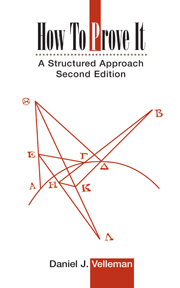4 - Relations
Summary
Ordered Pairs and Cartesian Products
In Chapter 1 we discussed truth sets for statements containing a single free variable. In this chapter we extend this idea to include statements with more than one free variable.
For example, suppose P(x, y) is a statement with two free variables x and y. We can't speak of this statement as being true or false until we have specified two values – one for x and one for y. Thus, if we want the truth set to identify which assignments of values to free variables make the statement come out true, then the truth set will have to contain not individual values, but pairs of values. We will specify a pair of values by writing the two values in parentheses separated by a comma. For example, let D(x, y) mean “x divides y.” Then D(6, 18) is true, since 6 | 18, so the pair of values (6, 18) is an assignment of values to the variables x and y that makes the statement D(x, y) come out true. Note that 18 does not divide 6, so the pair of values (18, 6) makes the statement D(x, y) false. We must therefore distinguish between the pairs (18, 6) and (6, 18). Because the order of the values in the pair makes a difference, we will refer to a pair (a, b) as an ordered pair, with first coordinate a and second coordinate b.
Information
- Type
- Chapter
- Information
- How to Prove ItA Structured Approach, pp. 163 - 225Publisher: Cambridge University PressPrint publication year: 2006
